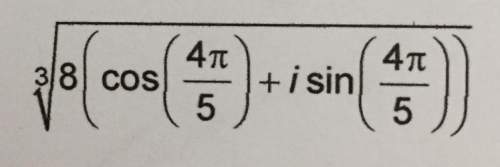
Mathematics, 25.01.2021 05:50, juvie65
Betsy, a recent retiree, requires $5,000 per year in extra income. She has $50,000 to invest and can invest in B-rated bonds paying 13% per year or in a certificate of
deposit (CD) paying 3% per year. How much money should be invested in each to realize exactly $5,000 in interest per year?
The amount of money invested at 13% = $13,750
The amount of money invested at 3% =

Answers: 3
Other questions on the subject: Mathematics

Mathematics, 21.06.2019 16:00, RyannLambertt9722
On saturday morning, calls arrive at ticketmaster at a rate of 108 calls per hour. what is the probability of fewer than three calls in a randomly chosen minute?
Answers: 1

Mathematics, 21.06.2019 19:10, lays20001
Which situation can be modeled by the inequality 5 + 10w ≥ 45? a. you start with $5 and save $10 a week until you have at least $45. b. you start with 5 baseball cards and purchase 10 cards every week until you have at most 45 cards. c. you start with 5 water bottles and purchases cases of 10 water bottles each until you have a total of 45 water bottles. d. you spend $5 plus $10 per week until you have less than $45.
Answers: 3


Mathematics, 21.06.2019 21:30, gonzalezashley152
In a test for esp (extrasensory perception), the experimenter looks at cards that are hidden from the subject. each card contains either a star, a circle, a wave, a cross or a square.(five shapes) as the experimenter looks at each of 20 cards in turn, the subject names the shape on the card. when the esp study described above discovers a subject whose performance appears to be better than guessing, the study continues at greater length. the experimenter looks at many cards bearing one of five shapes (star, square, circle, wave, and cross) in an order determined by random numbers. the subject cannot see the experimenter as he looks at each card in turn, in order to avoid any possible nonverbal clues. the answers of a subject who does not have esp should be independent observations, each with probability 1/5 of success. we record 1000 attempts. which of the following assumptions must be met in order to solve this problem? it's reasonable to assume normality 0.8(1000), 0.2(1000)%30 approximately normal 0.8(1000), 0.2(1000)% 10 approximately normal srs it is reasonable to assume the total number of cards is over 10,000 it is reasonable to assume the total number of cards is over 1000
Answers: 1
Do you know the correct answer?
Betsy, a recent retiree, requires $5,000 per year in extra income. She has $50,000 to invest and can...
Questions in other subjects:

History, 10.12.2019 13:31

Physics, 10.12.2019 13:31

Mathematics, 10.12.2019 13:31


Chemistry, 10.12.2019 13:31

Mathematics, 10.12.2019 13:31


Geography, 10.12.2019 13:31

History, 10.12.2019 13:31







